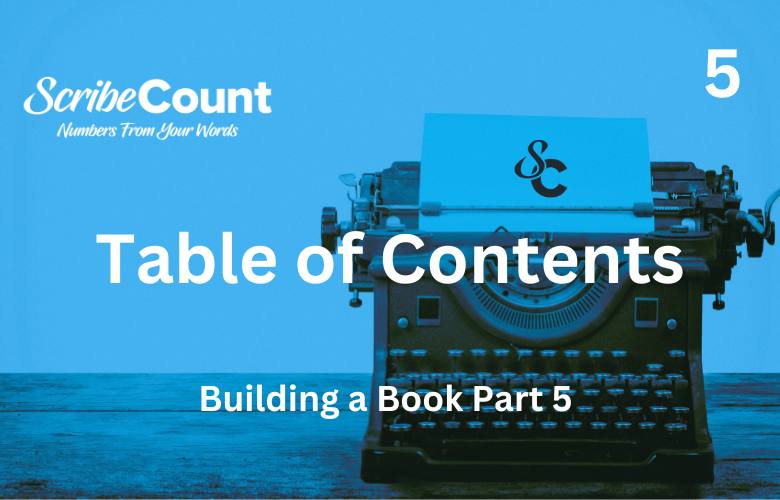Constructing a Table of Contents for a Self-Published Novel
A table of contents (TOC) serves as a roadmap for the reader, providing a clear guide to the structure of your novel. It not only helps readers navigate your book but also reflects the organization of your narrative. For self-published authors, a well-constructed table of contents is key for creating a professional and polished product. This article will explore how to create an effective TOC, outlining the different sections, what each section entails, and how to properly format it. It will also provide insights into page numbers, front matter, chapters, scenes, and back matter, and offer guidance on the average lengths of books and chapters by genre.
Front Matter
The front matter is the portion of the book that appears before the main narrative begins. This section typically includes elements such as the title page, copyright page, dedication, acknowledgements, and sometimes a foreword or introduction. The purpose of the front matter is to provide important information to the reader while also setting the tone for the book. It is an essential part of the book's layout, but it does not directly contribute to the story. When constructing your TOC, the front matter is usually placed at the beginning, with each section properly labeled. For example, "Title Page," "Dedication," and "Acknowledgements" would be listed in order, along with the page numbers where each section appears.
Chapters
Chapters are the core structural elements of your novel. They divide the book into manageable segments, allowing readers to pause and resume the story at convenient points. Each chapter should be clearly marked in the table of contents, along with the corresponding page number. The length of each chapter can vary greatly depending on the genre and writing style, but they typically range from 2,000 to 5,000 words for most genres. In some cases, especially for longer novels, chapters may be broken up into parts or scenes. It is essential that chapters are numbered sequentially and listed in the table of contents to help guide the reader through the flow of the narrative.
Parts
In some novels, the story is divided into distinct parts, each focusing on a specific segment of the plot. These parts are generally used to indicate a shift in the storyline, often marking significant events or changes in perspective. Parts are often employed in longer, more complex novels, where the narrative spans multiple settings, characters, or timelines. While parts are not mandatory in all novels, they can enhance the readability and pacing by breaking the story into digestible chunks. If your novel includes parts, they should be labeled in the table of contents as separate entries, followed by the page number where the part begins. For example, you might list "Part One: The Beginning" or "Part Two: The Climax."
Scenes
Some novels, particularly those in genres like historical fiction, literary fiction, or thrillers, break their chapters down even further into scenes. A scene is a smaller unit within a chapter that focuses on a specific moment or event. Scenes are often defined by changes in location, time, or characters. While it is not common to list individual scenes in the table of contents, it is something to consider if your book has a particularly complex structure or if you want to highlight the importance of specific moments within a chapter. If you choose to include scenes, each one should be clearly labeled and accompanied by the corresponding page number, ensuring that readers can easily locate each specific moment of the story.
Back Matter
The back matter refers to the content that appears after the main narrative of the novel. It typically includes additional sections like an epilogue, glossary, bibliography, author bio, and other supplementary materials. The back matter can vary greatly depending on the genre and the author’s preferences, but it is important to ensure that these sections are listed in the table of contents so that readers can find them easily. For example, if your novel has an epilogue or an appendix, you should include these elements in the table of contents along with their page numbers. While the back matter is not essential to the story, it can provide readers with valuable context, especially for genres like historical fiction or non-fiction.
Page Numbers
Each entry in the table of contents should be accompanied by a page number that directs the reader to the specific location of that section. Page numbers in the TOC are essential for the navigability of the book and are often aligned to the right side of the page for ease of reference. For self-published authors, page numbers should be carefully reviewed to ensure that they correspond with the correct sections, particularly after formatting the manuscript. A common practice is to begin numbering pages after the front matter, starting with the first page of the actual story or the first chapter.
Average Book Lengths by Genre
The length of a novel can vary widely depending on the genre, target audience, and narrative style. In general, the average length of a book by genre is as follows:
- Fiction: Most novels fall within the 70,000 to 100,000-word range. However, literary fiction and historical fiction can sometimes extend to 120,000 words or more.
- Science Fiction/Fantasy: These genres often have longer books, with word counts averaging between 90,000 and 150,000 words, depending on the complexity of the world-building.
- Romance: Romance novels typically range from 50,000 to 90,000 words, with category romance being on the shorter end and contemporary romance on the longer.
- Mystery/Thriller: Mysteries and thrillers often fall in the 70,000 to 100,000-word range, though some crime novels can be even longer.
- Young Adult (YA): YA novels tend to be shorter, ranging from 50,000 to 80,000 words, although fantasy and dystopian YA books can be much longer.
Chapter Length
Chapter length can also vary depending on genre, but the average chapter length typically falls between 2,000 and 5,000 words. In genres like romance or mystery, chapters may lean toward the shorter side, while in fantasy or literary fiction, they could be longer. It’s important to maintain a consistent chapter length to ensure the pacing of your story flows smoothly. Too many short chapters may disrupt the rhythm of your narrative, while overly long chapters could make it harder for readers to engage with your book in manageable segments.
Example of a Table of Contents
Below is an example of a well-constructed table of contents for a fictional novel. This example includes front matter, parts, chapters, and back matter:
Table of Contents
Front Matter
Title Page ............................................................................ 1
Copyright Page ................................................................. 2
Dedication ...................................................................... 3
Acknowledgements .................................................... 4
Part One: The Beginning
Chapter 1: The First Encounter ........................................ 5
Chapter 2: Secrets Unveiled ........................................... 14
Chapter 3: The Decision .................................................. 22
Part Two: The Conflict
Chapter 4: Into the Darkness ......................................... 30
Chapter 5: Betrayal .......................................................... 40
Chapter 6: Escape ............................................................ 50
Part Three: The Resolution
Chapter 7: The Final Stand ............................................. 60
Chapter 8: A New Beginning .......................................... 70
Back Matter
Epilogue .......................................................................... 80
Author’s Note ................................................................. 82
About the Author .......................................................... 85
Acknowledgments .......................................................... 86
In this example, the table of contents clearly lists the main sections, parts, and chapters of the novel, making it easy for readers to navigate. Each chapter is numbered sequentially, and the page numbers correspond accurately to the starting page of each section. The inclusion of the back matter is also noted, ensuring that readers can easily find supplementary materials like the author’s note or acknowledgments.
Conclusion
Creating a table of contents for your self-published novel is an essential part of the book's organization. A clear and well-structured TOC enhances the reading experience by providing readers with easy access to different sections of your story. By understanding the components of front matter, chapters, parts, scenes, and back matter, as well as considering factors like page numbers, chapter length, and genre, you can create a table of contents that improves both the functionality and professionalism of your book

